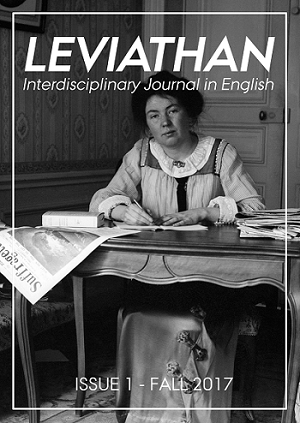Pride and Prejudice: A Bildungsroman
DOI:
https://doi.org/10.7146/lev.v0i1.96779Keywords:
romance novel, Bildungsroman, alienation, agency, reintegration, maturation, Literature in English 1Abstract
Jane Austen’s Pride and Prejudice has previously been situated as a romance novel. Critics such as Pamela Regis support reading the novel as a romance: She states that the novel shows the most characteristic features of the genre, as it focuses on a female protagonist and the goal of marriage. However, the romance genre does not embrace the individual character development of the protagonist, Elizabeth Bennet, which I find central to the novel. I therefore argue that this development justifies reading the novel in terms of the Bildungsroman genre. This article will examine the central features of the Bildungsroman genre and how these are expressed in Elizabeth’s mental and behavioural development throughout the novel. Consequently, the presence of these genre features situates Pride and Prejudice as a Bildungsroman.References
Abrams, M.H. & Geoffrey Galt Harpham. A Glossary of Literary Terms. Eleventh edition. Cengage Learning, 2015.
Austen, Jane. Pride and Prejudice. Fourth edition. W. W. Norton & Company, Inc., 2016.
Brontë, Charlotte. Jane Eyre. Wordsworth Editions Limited, 1999.
Ellis, Lorna. Appearing to Diminish: Female Development and the British Bildungsroman 1750-1850. Associated University Press, Inc., 1999.
Maier, Sarah E. ‘Portraits of the Girl-Child: Female Bildungsroman in Victorian Fiction’. Literature Compass, vol. 4, no. 1, 2007, pp. 317-319, 333. doi:10.1111/j.1741-4113.2006.00411.x. Accessed 15. Nov. 2016.
Regis, Pamela. A Natural History of the Romance Novel. University of Pennsylvania Press, 2003.
Downloads
Published
How to Cite
Issue
Section
License
Attribution-NonCommercial-NoDerivatives 4.0 International (CC BY-NC-ND 4.0)
You are free to share (copy and redistribute the material in any medium or format).
However:
You may not use the material for commercial purposes.
You must give appropriate credit, provide a link to the license, and indicate if changes were made. You may do so in any reasonable manner, but not in any way that suggests the licensor endorses you or your use.
If you remix, transform, or build upon the material, you may not distribute the modified material.
You may not apply legal terms or technological measures that legally restrict others from doing anything the license permits.





